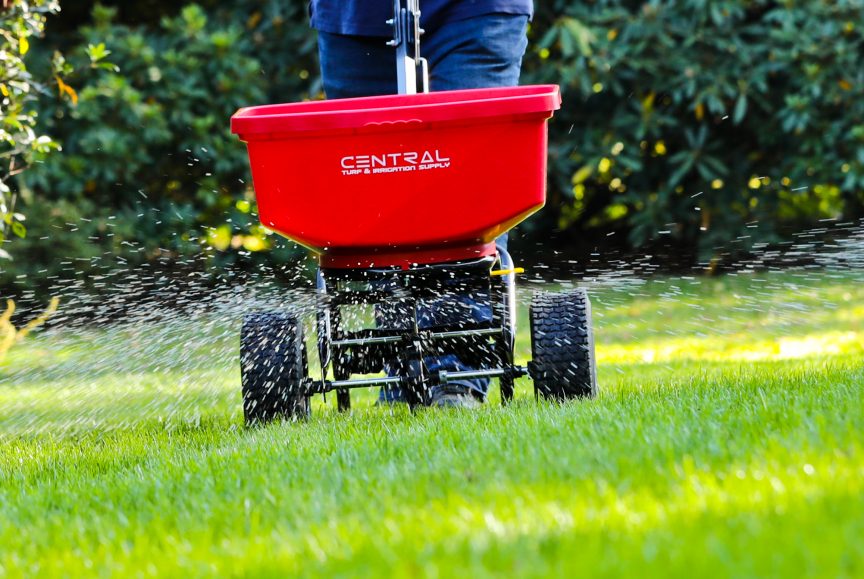Ask most people this question and you’ll likely be told hybrid is a car with a traditional gas motor combined with a modern battery powered motor. In the fertilizer industry we have borrowed the term to describe blends that combine two unique sources for powering plant growth; synthetic-derived nutrients and organic-derived nutrients. You may have also heard hybrid fertilizers described as ‘bridge’ products or ‘organic based’ products. All three descriptions represent the practice of combining synthetic and organic nutrient sources.
Traditional vs Modern
Our hybrid car analogy breaks down completely when looking at what is considered traditional and modern in fertilizer manufacturing. The Haber-Bosh process for turning atmospheric nitrogen into nitrogen fertilizer was invented in 1913. The technology launched the Green Revolution after World War I. Since then, ammonium nitrate and urea fertilizer has provided the most cost-effective method for promoting plant growth. We now describe the outcome of this chemical synthesis as ‘traditional’ fertilizer. However, modern science has reconsidered the benefits of organic nutrient sources and modern society has re-evaluated some of the unintended consequences that result from the overuse of synthetic nitrogen. Re-introducing the old-world practice of adding organic nutrient sources is now described as ‘modern’.
There are multiple reasons for the modern re-evaluation of organic sourcing. Let’s start with sustainability. Recycling nutrient waste streams, such as poultry manure and biosolids, is part of the circular economy essential to a world that must better manage its’ resources. Preventing water pollution from nutrient leaching and runoff has also become a modern priority. State fertilizer regulations are all based on protecting water quality. Organic nutrient sources release slowly, reducing the chance for leaching and runoff and enhancing the likelihood that added nutrients end up in the plant and not the water.
Focus on Healthy Soils
Perhaps the most compelling reasons for utilizing organic sources are agronomic. Carbon in organic matter promotes microbial life. Scientific discoveries regarding the soil food web and the multitude of plant/microbe synergistic relationships have placed a new emphasis on the value of promoting those relationships and maintaining what can best be described as healthy soils. Plants expend a great deal of energy on promoting microbial life in the manufacturing of what is called the ‘liquid carbon highway’. The liquid carbon is sugar, starches and organic acids produced by the plant and sent down through the root system to feed microbes that harvest nutrients from the soil for the plant and, in the case of organic acids, are made to solubilize nutrients directly. Adding fresh organic matter helps to provide food for the microbes giving the plant more energy for growth. Additionally, organic nutrient sources contain a host of secondary and micronutrients, organic acids and plant growth hormones that are essential for healthy plant growth.
Hybrid = Nutrient Efficiency
The clarion call for Hudson Valley Natural hybrid fertilizers is nutrient efficiency. To achieve this goal, we combine the best of both the organic and synthetic worlds. There remains great value in low-cost synthetic nitrogen fertilizer. This is especially so when utilizing the industry leading controlled release XRT technology from Knock. The drawback of using only synthetic fertilizer is that it is one dimensional. It is like eating only red meat. Eventually such a diet will produce unhealthy consequences. Straight synthetic NPK fertilizers tend to push unhealthy surge growth and lead to disease pathogens. They do not have any carbon energy or additional nutrients and compounds the plant is otherwise expending a great deal of energy to manufacture and harvest. They can also lead to wasteful nutrient runoff, leaching and volatilization. Straight organic fertilizers can be overly expensive, slow to respond and fail to produce the desired growth response. In fact, too much organic matter will over stimulate microbial growth which results in the loss of plant available nutrients, a process called demineralization. The Hudson Valley Natural hybrid fertilizers combine synthetic nitrogen and organic sources to achieve a balance of carbon and nitrogen inputs. This is referred to as balancing C/N or the carbon to nitrogen ratio. Doing so results in the nutrient efficiency that is our ultimate goal.
For the end-user nutrient efficiency offers bottom line benefits. Lower nutrient inputs produce equal or better growth response. Preventing surge growth produces healthier plants. Carbon energy promotes healthier soils and healthier plants. Hudson Valley Natural hybrid fertilizers offer cost effective fertility solutions that also help allay the hidden costs of managing a business and keeping customers satisfied.
About Jeffrey Thrasher
Jeffrey Thrasher, of Hudson Valley Natural, is a licensed Arborist with more than three decades of experience in the Green Industry. Jeffrey built a successful tree, lawn and landscape company in Westchester County, NY and Fairfield County, CT. After selling his business, he began work with fertilizer manufacturers to establish distribution nationally. This extensive hands-on knowledge and background has given Jeffrey the necessary tools and background to troubleshoot and solve the most difficult tree and ornamental issues. Jeffrey is an excellent resource to help you finding the right product and solution for your customers.

